Fleeing Vienna on a Wing and a Prayer Book
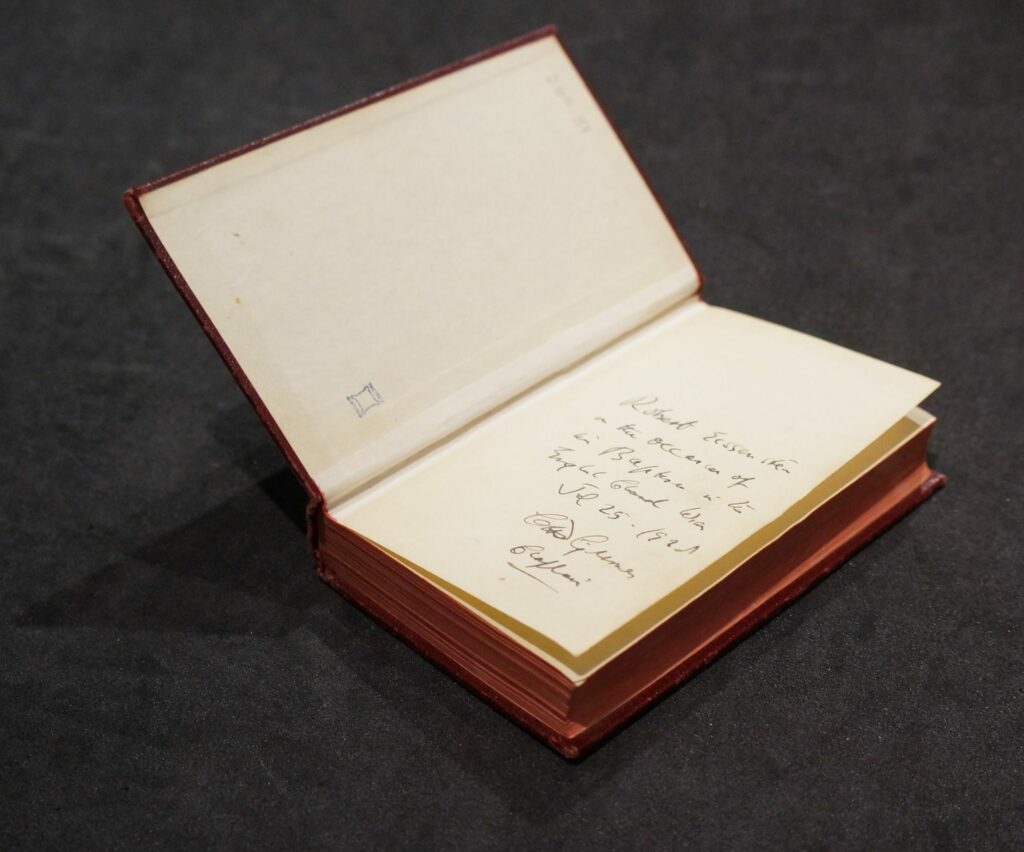
As part of my Collections Placement work at the Jewish Museum London, I have been assisting in the audit of the museum’s sizeable collection of prayer books. I have examined scores of sidurim and machzorim from all around the world and from centuries apart, printed and handwritten, leather-bound and adorned in silver. One could be forgiven then for passing over a rather nondescript Anglican Book of Common Prayer, yet on closer inspection, this book testifies to a remarkable story.
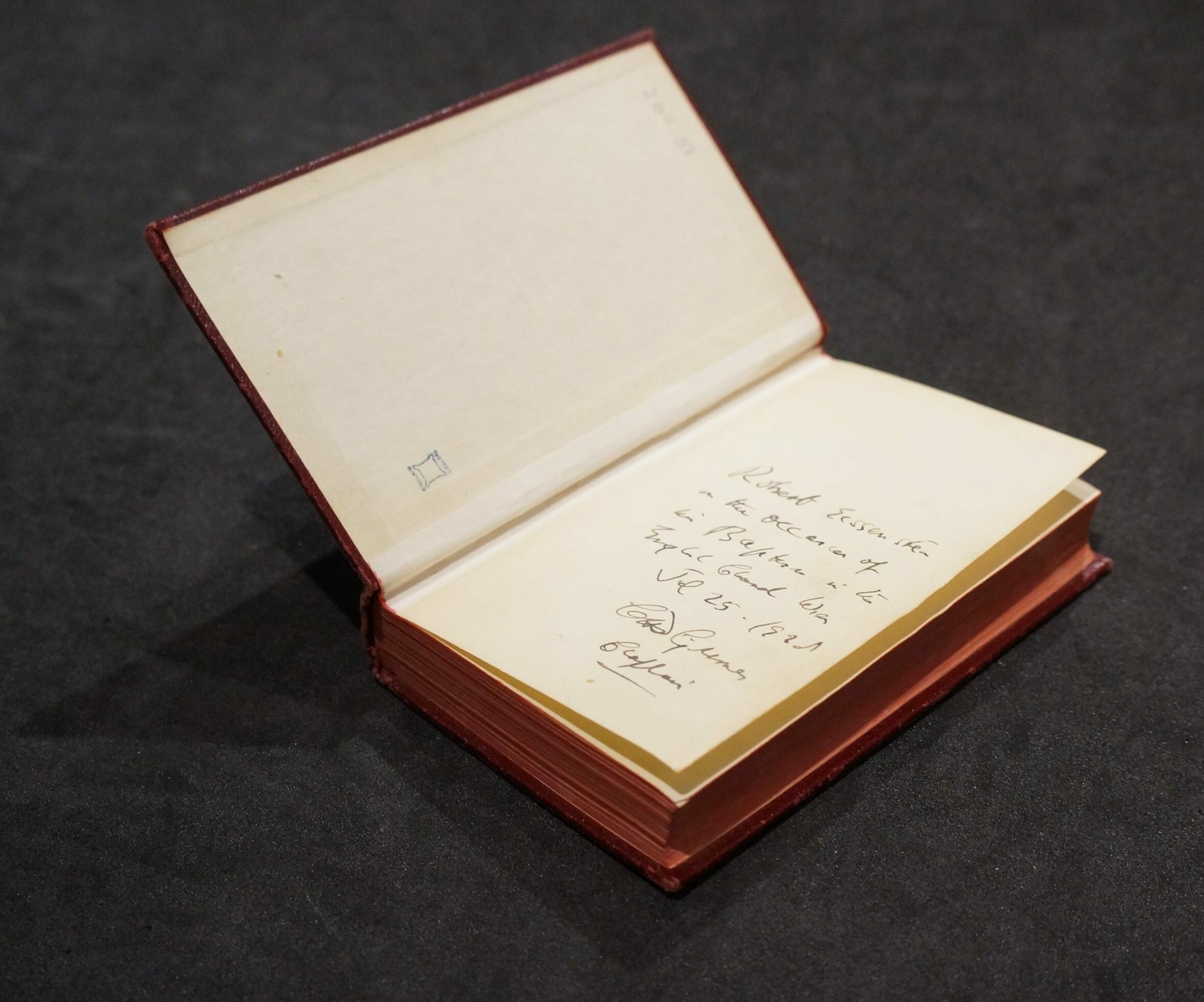
2011.51 – Book of Common Prayer.
Eighty-five years ago this March, Nazi Germany carried out its long-feared annexation of Austria. Within days of the Anschluss, Jews faced attack in the streets, many Jewish businesses were officially expropriated or looted, and the authorities began arresting prominent political opponents and Jewish leaders. Nearly two thousand Jews in Austria were reported to have committed suicide in the week that followed.
The British government’s position at the time was to tighten laws around visas for immigrants from Austria, preventing many thousands from escaping to the United Kingdom, and to renew restrictions on emigration to Palestine for another year. Beneath the Jewish Chronicle’s first headline reacting to the Anschluss, it was reported, “A number of refugees arriving at Folkestone via France have been sent back, permission to land having been refused by the British immigration authorities.” The Evian Conference was held in response to the growing refugee crisis, where country after country refused to increase their quotas for Jewish refugees. More than 65,000 Austrian Jews would be killed in the Holocaust.
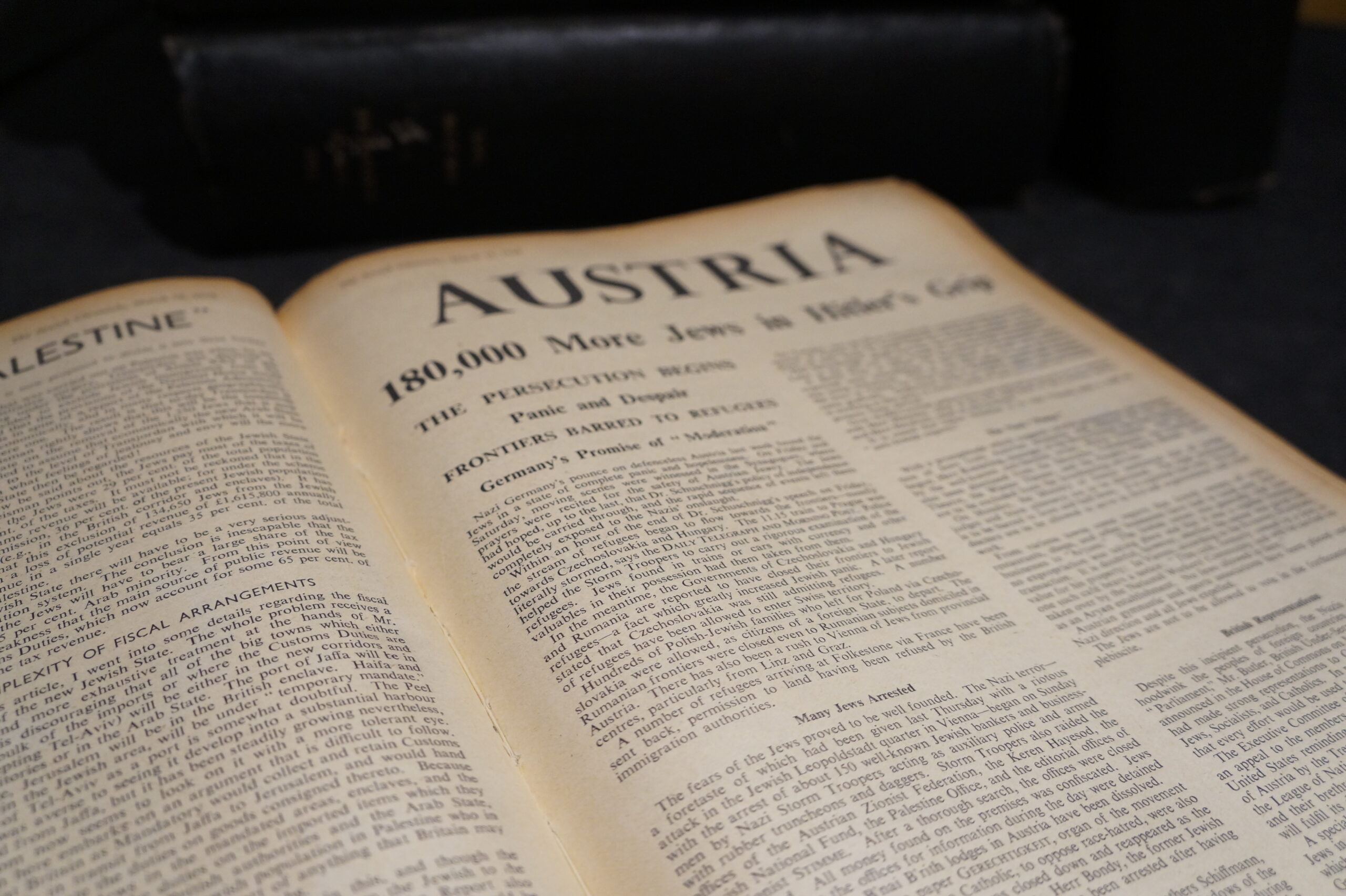
The Jewish Chronicle, March 18, 1938.
While a world-renowned figure like Sigmund Freud was able to escape with the help of friends abroad, the route from Vienna to the United Kingdom was even harder for would-be emigres without such connections. Crowds grew around the British Consulate in Vienna, while brownshirts intimidated Jews as they came and went. A queue stretched out from a church in the middle of Vienna, a small, Anglican church that ministered chiefly to a congregation of diplomatic staff from Britain. Word had spread that this church could provide evidence of baptism that might assist Jews as they applied for visas and hoped to cross the border; the quota on numbers of Jewish refugees made visas disproportionately harder to obtain for Jews. Joining this queue was a seventeen-year-old, Robert Eisenstein.
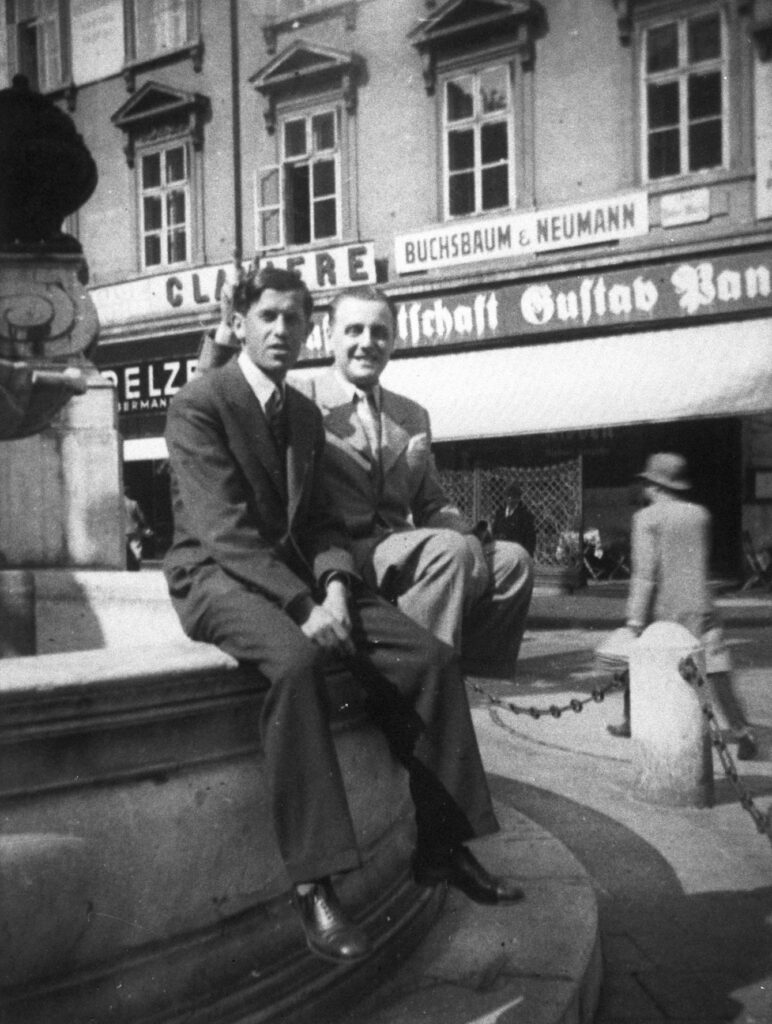
362.5 – Vienna before the war. David Sokal (left) escaped to England in 1939.
The Rev. Hugh Grimes and later Rev. Frederick Collard coordinated their efforts with Thomas Kendrick, George Berry and other consular staff, against the will of their superiors, in order to try to rescue Vienna’s Jews. Bishop Stanton Batty tried to justify these dubious conversions to the Church, but Grimes would be held back from returning to Vienna later that year and replaced by Collard. Without the diplomatic immunity enjoyed by his predecessor, Collard found himself questioned by the gestapo and the practice was stopped by September. One figure suggests that these vicars managed to provide baptism records to 1,800 Jews over this period.
Robert Eisenstein was officially baptised and given this copy of the Book of Common Prayer, and possibly given a crash course in the tenets of the Church of England. On the flyleaf, Grimes wrote an inscription backdating Robert’s baptism to 1921. Shortly after, Robert and his parents managed to escape to the United Kingdom, thanks in part, we might suppose, to this prayer book.
Once the Second World War had begun and for fear of a fifth column, the government sought to restrict the liberties of ‘enemy aliens’ who had left the continent. Robert Eisenstein (now anglicised to Evans) managed to escape this mass-imprisonment after he joined the Pioneer Corps in Devon, despite being underage. At a tennis club in London some years later, he met his future wife Eva Klapstock, herself a refugee from Berlin. She donated this book to the Jewish Museum London in 2011.
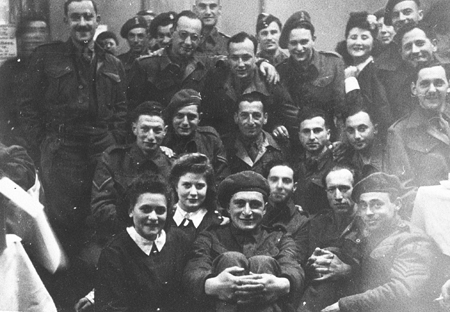
605.8 – Pioneer Corps celebrating Pesach in 1945.

Robert and Eva Evans on their wedding day with their mothers, London. Courtesy of the private archive of Eva Evans/ AJR.
Further reading:
You can hear Eva’s own testimony here: https://youtu.be/6kpkjud2-PA
You can see pictures of Robert and Eva here: https://www.ajrrefugeevoices.org.uk/RefugeeVoices/Eva-Evans
This year, the embassy in Vienna has unveiled a plaque to honour the bravery of those vicars and consular staff who worked so hard to assist refugees after the invasion: https://www.gov.uk/government/speeches/unveiling-a-plaque-from-the-association-of-jewish-refugees-at-the-british-embassy-vienna
This unorthodox rescue effort was described in the following article from the BBC in 2011: https://www.bbc.co.uk/news/world-14390524